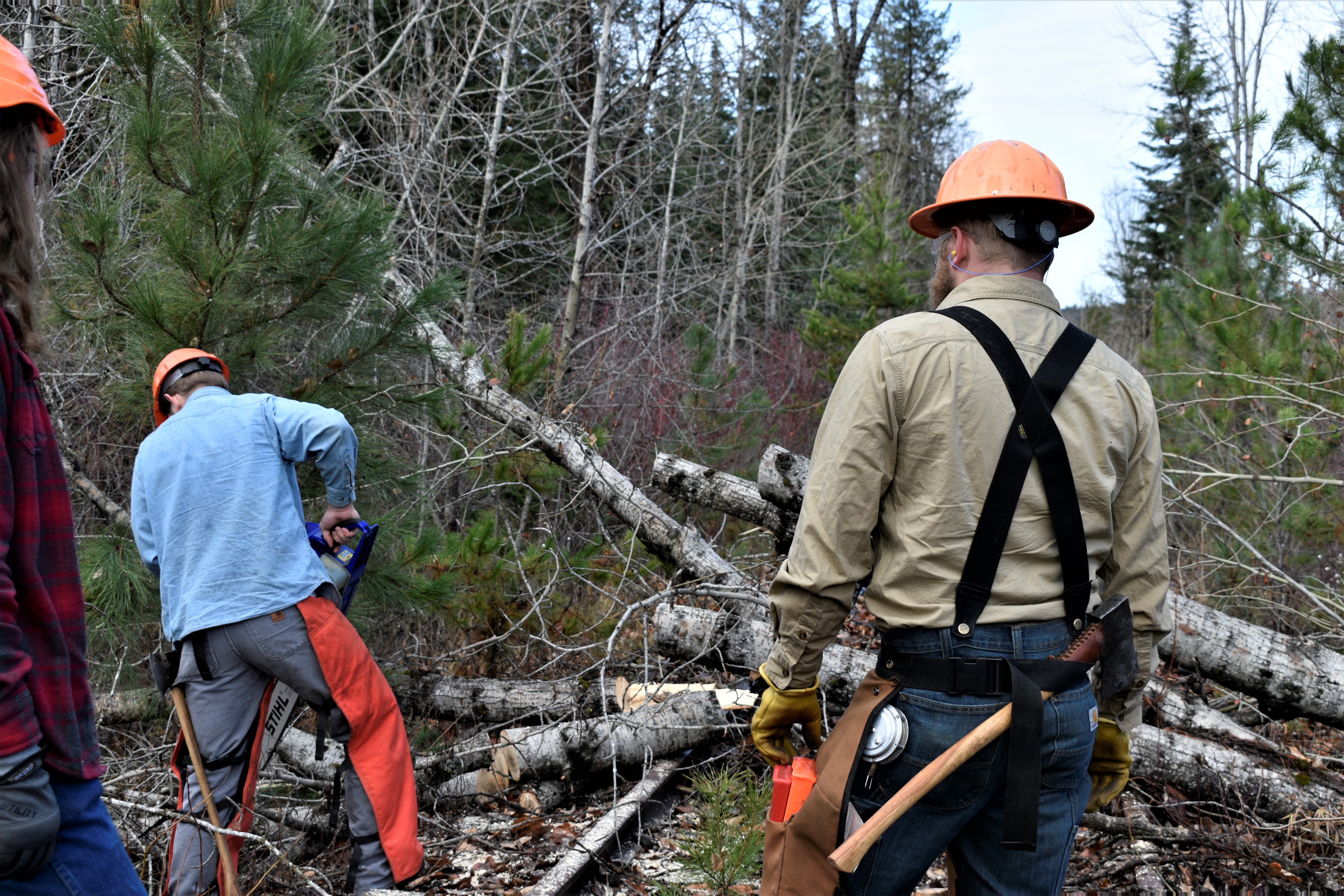
Northwest Skillset: How To Drop A Tree 101

Listen
Like the roots of northwest forests, the roots of the logging industry run deep in the region
Read
“Be safe. Don’t kill Makayla!” shouts Paul Riebe captain of the University of Idaho Vandaljacks Logger Sports team, to his teammates as we walk along the out-of-service St. Mary’s River Railroad track between Fernwood and Boville, Idaho. The Vandaljacks are on a mission. They need wood, lots of wood. Today, they are cutting down cottonwood trees.
Logger sports, or timber sports, is essentially old-timey logging but as a sport. There is sawing and chopping wood, pole climbing, axe-throwing and obstacle events. The kind of things northwest loggers of days gone by would do at the campsite around the fire to keep themselves entertained while clear cutting forests.
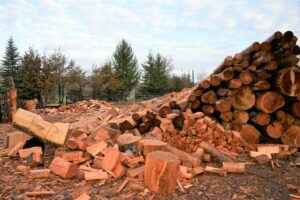
These days, it’s an arena sport with some college affiliated teams and indie pros. It requires a lot of wood. They are looking for cottonwood trees. This land is owned by the railroad company who is willing to let them come and cut down the cottonwoods because the trees are basically weeds.
“They aren’t useful for anything. They suck up a lot of water and it grows in areas like this and it’s really not good for anything besides practicing for logger sports,” Paul explains.
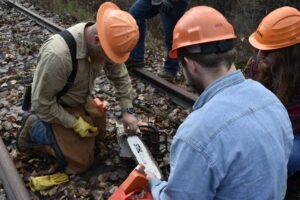
The Vandaljacks are decked out in waxed canvas and oil cloth. It’s warm and waterproof. They’re wearing chaps with pockets for things like wrenches, extra saw chains, and bright orange plastic wedges used to prop up parts of the tree to get the angle just right when they drop it. The chaps will also stop chainsaw teeth so that they don’t accidentally cut off one of their own limbs.
Everybody is wearing safety goggles in case a rogue wood chip goes flying and they have hard hats on because sometimes when cutting down a tree large branches can come loose and fall on the feller. Lumberjacks have a term for that, they call it a widow-maker.
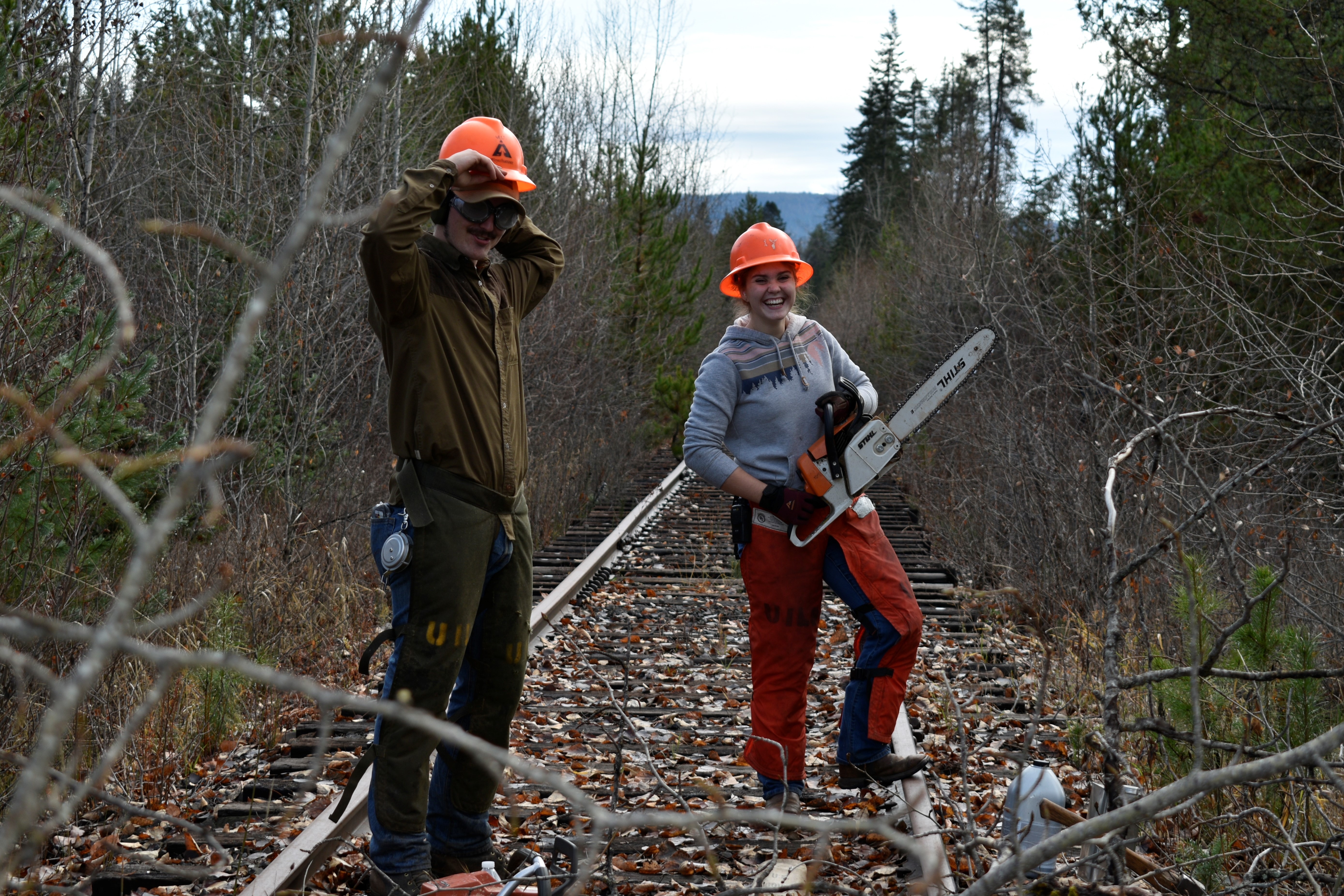
It is a weird spot to try and drop a tree. There is a fence on one side and a railroad on the other. Like real estate, picking a tree is first all about location.
Paul warns his team not to drop it on the fence, “I didn’t bring the fence fixing stuff, so we better not do that today. The other thing to be careful of is that if you fell directly onto the tracks like right here, it’ll break at least in one spot, possibly two, which ruins a good chunk of the tree.”
After finding a tree in a good spot, next check the angle. Find one that’s growing straight up. Not leaning too far off in one direction, because that makes it difficult and sometimes dangerous to fell.
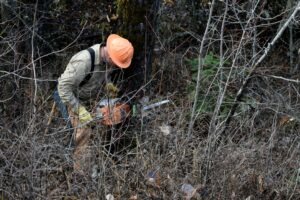
“You need to make sure you know exactly where the weight is distributed in the tree because that will give you an idea of where you can allowably make your face cut and your back cut and steer where the tree is probably going to go when you cut it,” Paul explains.
The face cut is an angled cut on the side of the tree in the direction that the tree will fall. This steers the tree. The back cut comes in on the other side and removes what is called the holding wood. Removing that holding wood increases the amount of load on the wood that is left.
Paul explains the mechanics, “as that load increases, you start to stress the fibers that are still holding the tree in place. You don’t actually want to cut all of the wood away, you want to leave a tab of original wood and that will act as a hinge as the tree falls over. We use the the woods fibers to control it and hinge it down.”
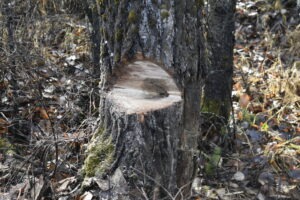
It’s hard work and there is a lot of planning that goes into it. But once everything is mapped out, the only thing left to do is fire up the chainsaw and make sure everybody is standing clear. The rule of thumb is to stand one and a half times the tree height away. Once everybody is in position, give the pull cord a good yank. First make that face cut, take a triangle of wood out from one side of the tree, then come around to the other side and slice in the back cut. If needed, hammer in some of those plastic wedges to maintain the correct angle and create some space between the stump and the rest of the tree so the bar of the saw does not get pinched between the two sections.
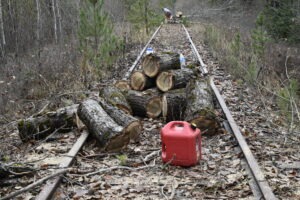
Carefully Paul works the chainsaw through the tree trunk. Sawdust, sap and water is flying out of the tree. There is a loud crack and the tree starts to fall. As it tips over, Paul sprints away as fast as he can exiting at an angle. He says it is important to exit at about a 45°angle because sometimes a tree can slide back on the stump and hit the feller if they are directly behind it.
Once he gets to safety, Paul smiles up at his team. Sawdust and wood chips are all over his face, stuck to his safety goggles. The tree is on the ground. They will now cut it into sections that they can lift and load onto their Supertruck. It is a big red beast with a monster sized flatbed. They will take this to the arena where it will live out the rest of it days being chopped, split and bucked during practice sessions.
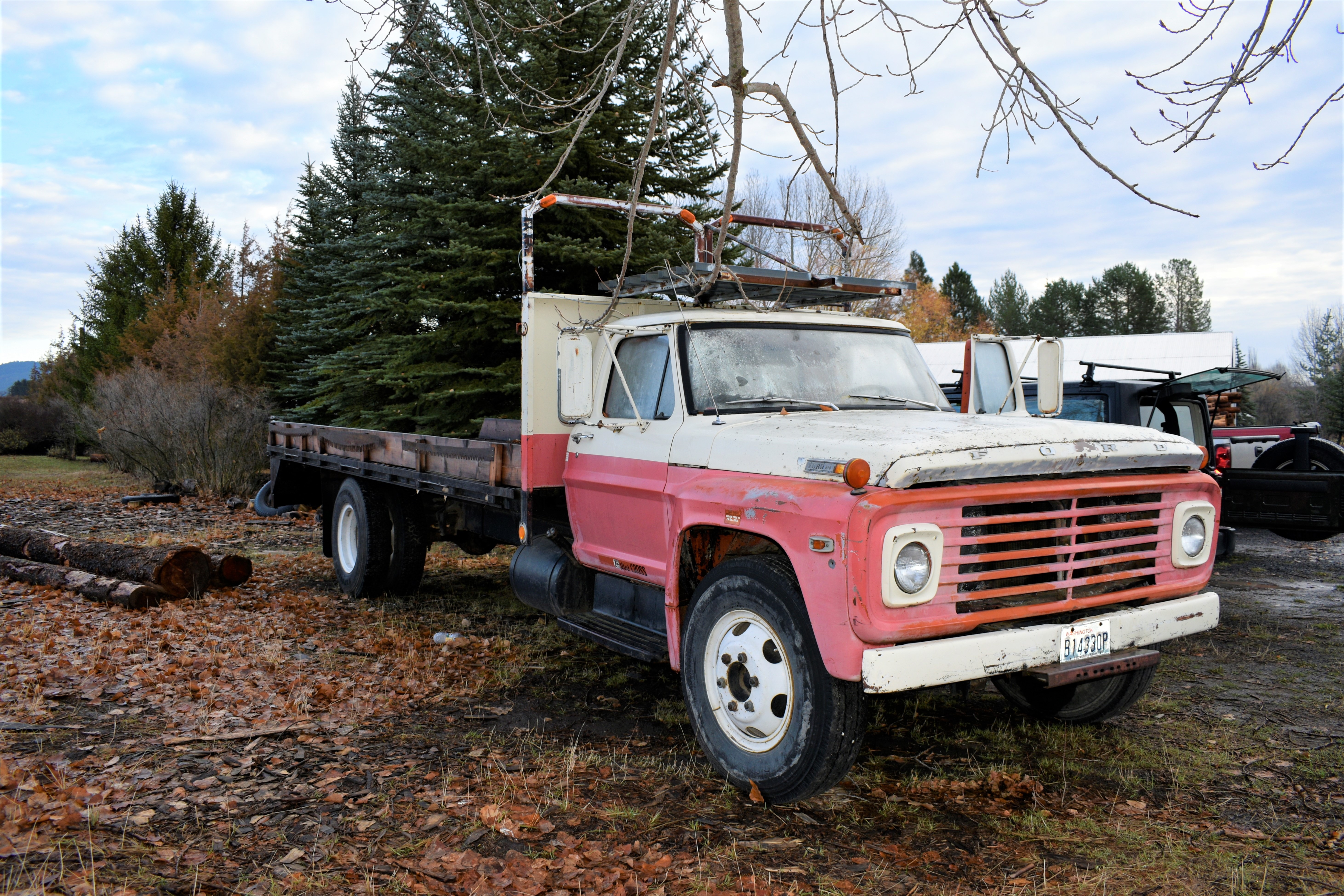
Related Stories

Concejo elimina Downtown Pasco Development Authority
El Concejo de Pasco decidió por unanimidad disolver Downtown Pasco Development Authority (la autoridad encargada del desarrollo del centro de la ciudad), durante una reunión ordinaria celebrada el pasado 15 de abril. Continue Reading Concejo elimina Downtown Pasco Development Authority

Pasco City Council dissolves Downtown Pasco Development Authority
The Pasco City Council unanimously decided to dissolve the Downtown Pasco Development Authority, after a public hearing this week. The Authority had been examined for months, and a state audit questioned its administrative management. Continue Reading Pasco City Council dissolves Downtown Pasco Development Authority

Idaho doctor: Abortion access ‘integral to the practice of OB-GYN’
Idaho has one of the strictest abortion bans in the country. On April 24th, the U-S Supreme Court is scheduled to hear oral arguments in a case to decide whether Idaho’s ban violates a federal law mandating emergency care. Continue Reading Idaho doctor: Abortion access ‘integral to the practice of OB-GYN’












